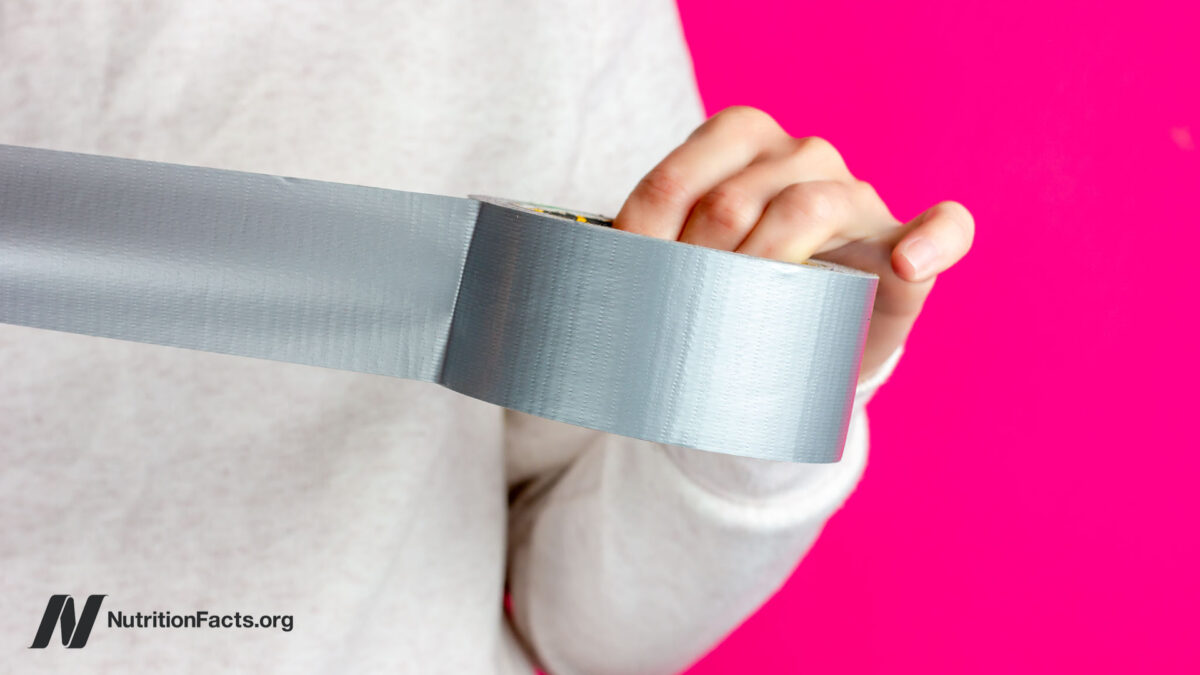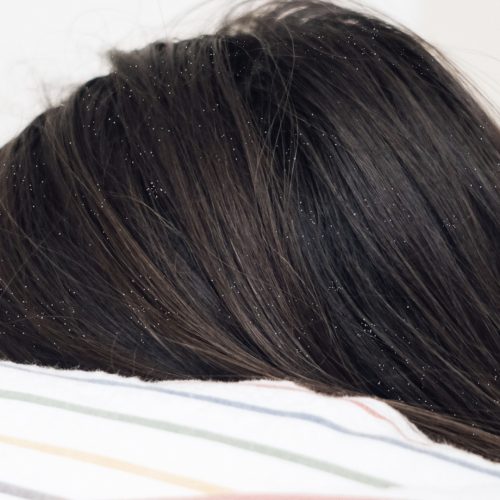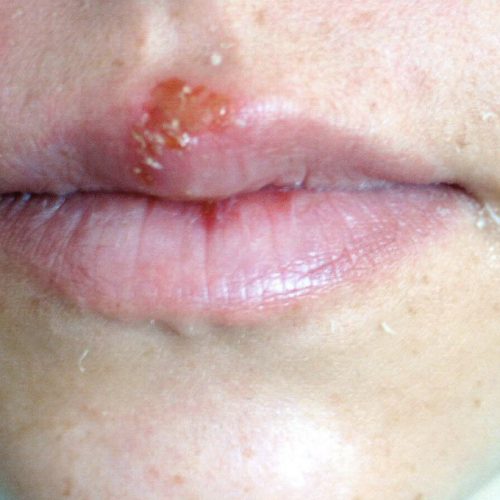Duct tape beat out cryotherapy (freezing) for treating warts in a randomized, controlled, head-to-head trial.
When I was reviewing “The Science Behind Common Over-the-Counter Remedies Used in Dermatology,” such as tea tree oil for acne or nail fungus, I was surprised to see a section on duct tape on the same page. Duct tape? The only time I remember seeing duct tape used in a medical study was for identifying the gases responsible for the odor of human farts. That study involved a “collection system” comprised of “gas tight pantaloons” sealed to the skin with duct tape to assess the wind-breaking ability of a cushion called the Toot Trapper.
In this case, the dermatology journal was talking about warts. As I discuss in my video Duct Tape and Wart Removal, “Duct tape brings out our inventive, slightly kooky side…Given this versatility, it wasn’t so surprising a few years ago when a group of doctors…reported that duct tape could get rid of warts.” As I noted in my previous video on warts, Benefits of Tea Tree Oil for Warts and Cold Sores, all sorts of strange things are purported to cure warts—because most warts go away on their own. Researchers followed a thousand kids for two years, and two-thirds of their warts disappeared without doing a thing. So, maybe we should just leave them alone, “although…there are cases which may warrant treatment…” Otherwise, we can just let our own body take care of them.
Warts are caused by wart viruses, so spontaneous wart disappearance is thought to be an immune response where our body finally wakes up and takes notice. This assumption is based on studies where foreign proteins were injected into the wart itself. In one such study, researchers injected a measles-mumps-rubella (MMR) vaccine directly into the wart, which, compared to placebo, appeared to accelerate the immune clearance process. The problem is that injections hurt, of course, and 30 percent of the kids who got their warts injected with the vaccine suffered a flu-like syndrome. Yikes. Okay, scratch that. What else can we do?
Within a few months, any placebo treatment will work in about a quarter of the cases, so it wouldn’t mean much if you put duct tape on 100 warts and 23 went away. The traditional medical therapies of acid treatments and freezing treatments bump up the cure rate to about 50 percent, so, if you were really serious about testing the efficacy of duct tape, you would pit it head-to-head against one of those two treatments, which is exactly what researchers did in “The Efficacy of Duct Tape vs Cryotherapy in the Treatment of Verruca Vulgaris (the Common Wart).” (Cryotherapy is one of the current treatments of choice for many pediatricians.)
“Objective: To determine if application of duct tape is as effective as cryotherapy in the treatment of common warts.” Patients were randomized to receive either liquid nitrogen applied to each wart or “duct tape occlusion (applied directly to the wart).” When I heard about treating warts with duct tape, I had an image where duct tape was used to try to rip off the warts, but that wasn’t the case. A little circle of duct tape was applied to the wart every week or so.
Although there had been a few anecdotal reports of using tape, no prospective, randomized, controlled trial had been performed until this study. Researchers found that the duct tape “is not only equal to but exceeds the efficacy of cryotherapy in the treatment of the common wart.” Cryotherapy worked in 60 percent of the cases, but 85 percent of the duct-taped patients were cured. The researchers concluded: “Duct tape occlusion therapy was significantly more effective than cryotherapy for treatment of the common wart.” More effective and with fewer side effects. “The only adverse effect observed in the duct tape group during our study was a minimal amount of local irritation and erythema,” or redness, whereas cryotherapy hurts.
Do you want to hear the saddest thing? One young child actually vomited in fear of pain before each cryotherapy session. It was as though the poor kid was being tortured. Cryotherapy can not only cause pain, but bloody blisters that can get infected, and it can mess up your nail bed, too.
So, duct tape: more effective, fewer side effects, and more convenient. Compare applying a little duct tape at home to making multiple clinic visits every two weeks or so. With duct tape, it’s win-win-win.
Duct tape “can now be offered as a nonthreatening, painless, and inexpensive technique for the treatment of warts in children.” How much does a little piece of duct tape even cost? Win-win-win-win! Of course, the money you save is the money the doctor loses, and there’s no way the medical profession is going to let this go unchallenged. Further studies were performed and failed to show an effect. So, we end up with conclusions like this in the medical literature: “Is duct tape effective for treating warts?… No.” What? Is duct tape really ineffective after all, or was there some kind of critical design flaw in the follow-up studies? You can find out in my follow-up video Can You Really Remove Warts with Duct Tape?.
This video is the first in a three-part series on duct tape for wart removal. The others are Can You Really Remove Warts with Duct Tape? and Which Type of Duct Tape Is Best for Wart Removal?.




